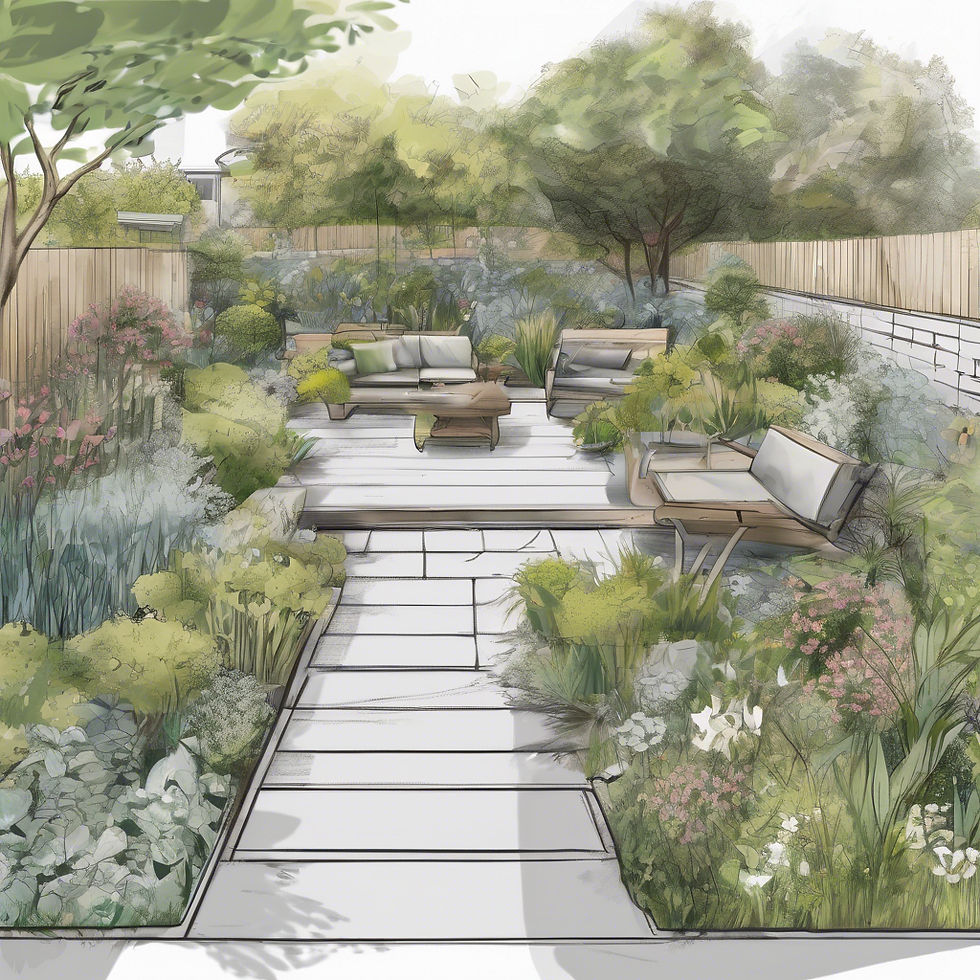Planning For A Thriving Garden: Essential Steps for Spring Preparation
- gpgardendesign
- Feb 9
- 4 min read
As spring approaches in the UK, excitement builds for vibrant flowers, fresh vegetables, and lush greenery. With an average spring temperature of 9°C to 15°C, this is the perfect time to prepare your garden for the growing season. This post outlines essential steps to help your garden achieve its full potential, ensuring a successful harvest and beautiful blooms.
Assess Your Garden's Condition
Before you dive into preparations, take a close look at your garden's current state. Walk around and note any areas needing attention. Are some spots overly compacted, or do they lack nutrients? Has winter left behind debris, leaves, or invasive weeds?
Identifying these factors early allows you to create a strategic plan. If you notice compacted soil, consider aerating it to enhance drainage and promote healthier roots. Soil compaction is a common issue, especially in damp, shaded areas with poor drainage.
Clean Up Winter Debris
Cleaning up is one of the first steps in spring garden preparation. Fallen leaves, twigs, and organic matter can harbour pests and diseases. Gather dead leaves using a rake, and remove any old mulch.
For an eco-friendly approach, add organic material to your compost pile. According to WRAP UK, composting can reduce household waste by up to 30%, making it a smart choice for both your garden and the environment. Proper composting also improves soil structure and nutrient levels.
Test the Soil
Healthy soil is key to a thriving garden. Testing your soil's pH and nutrient content is vital before planting. You can purchase a soil testing kit from retailers like the RHS or consult your local council for community testing services.
Once you understand your soil's makeup, you can amend it properly. UK soil varies widely, with chalky and clay soils common in the southeast, while loamy soil is more prevalent in the Midlands. If your soil's pH is too low (acidic), adding lime can raise it. If it's too high (alkaline), sulphur can help lower it. Adding compost can improve soil structure by as much as 20%, providing your plants with essential nutrients.
Plan Your Garden Layout
Now is the perfect time to design your garden layout. Consider what plants you want to grow and their specific needs. Allocate spaces according to sunlight exposure, moisture needs, and plant height to create an efficient and visually engaging layout.
For example, planting taller crops like sunflowers on the north side ensures they don’t overshadow shorter plants like basil or radishes. Remember to implement companion planting strategies, as some plants, like marigolds, naturally repel pests such as aphids and whiteflies.
Prepare Your Beds
Once your layout is planned, it’s time to prepare the garden beds. Start by loosening the soil with a spade or fork to ensure aeration for root penetration. Next, remove any weeds that may have taken root over winter.
Incorporating organic materials like compost or peat moss into your garden beds can increase soil fertility and structure. Studies show that adding compost to soil increases microbial activity and water retention, leading to healthier plants and higher yields.

Choose Appropriate Plants
When selecting plants, consider the UK climate and the ideal growing conditions for each variety. Choose plants suited for your region that flourish in spring.
For a thriving vegetable garden, consider planting early varieties of carrots, peas, and broad beans. Tomatoes, if started indoors, can yield up to 30 pounds per plant in optimal conditions. For decorative gardens, spring-flowering bulbs like daffodils and tulips add colour and attract pollinators, which are essential for biodiversity.
Start Seeds Indoors
Many gardeners opt to start seeds indoors for crops that benefit from an early start before the last frost. This approach extends your growing season and boosts overall yield. The UK’s last frost date varies by region, with the south seeing warmer conditions earlier than the north.
Use seed trays or pots filled with high-quality seed-starting mix. Ensure proper light, moisture, and warmth to nurture healthy seedlings. Once the threat of frost is gone, you can transplant seedlings into your garden, giving them a head start in growth.
Mulching and Weed Prevention
Applying the right mulch can help retain soil moisture and suppress weeds. Consider using organic mulch such as shredded bark, straw, or well-rotted manure. This barrier not only prevents weeds but also regulates soil temperature and adds nutrients as it decomposes.
A well-mulched garden can reduce water evaporation by up to 70%, which is particularly beneficial during dry spells in the UK. However, avoid piling mulch too close to plant stems, as this can cause rot.
Monitor for Pests and Diseases
With new growth comes the chance for pest infestations and diseases. Common UK garden pests include slugs, aphids, and cabbage white caterpillars. Keep a close watch for signs of trouble, such as discoloured leaves or wilting.
Implementing integrated pest management (IPM) techniques can help control pest populations naturally. Introducing beneficial insects like ladybirds can reduce aphid numbers significantly. If necessary, use insecticidal soap or copper tape for slug control to maintain a healthy garden without resorting to harsh chemicals.
Final Touches
As spring arrives, enhance your garden with personal touches. Create a cosy seating area, add decorative stones, or incorporate garden art. A well-designed garden is not just about the plants; it’s also a space for relaxation and enjoyment.

_edited.png)





Comments